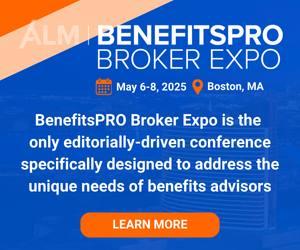What do 2,845 hospitals, 5,906 credit unions and 1,700 private colleges have in common?
Aside from a dedicated focus on improving the lives of others, all are nonprofit, nongovernmental organizations that need help to run effective retirement savings plans for their employees.
And all are part of what is estimated to be more than a $1.63 trillion, largely under-served market.
There is tremendous opportunity for financial advisors to provide value to both plan sponsors and participants in the not-for-profit (NFP) retirement plans marketplace.
NFP or nonprofit organizations tend to be highly appreciative of and loyal to those who support and help them. That means assets from nonprofit retirement plans tend to stay in place, especially when providers and advisors deliver high-quality service year after year.
Yet, many NFP plan sponsors go wanting for support and struggle with managing their retirement plans. One reason: the market has some idiosyncrasies that may trip up the uninitiated.
Advisors as well as plan sponsors can make missteps if not properly informed. For instance, a common mistake is that many sponsors – and sometimes their advisors -- do not realize that assets from a 403(b) defined contribution plan cannot be co-mingled with assets from a 401(k) plan. Given that many nonprofits have one or both of these plans it’s a mistake that advisors need to be on the lookout for when conducting reviews.
But many advisors who support nonprofit organizations are not specialists in this marketplace. They not only survive but thrive by working with an astute and responsive provider with the know-how and resources to support them.
Recently, there has been consolidation among providers who serve the NFP market as the biggest, most experienced players expand their leadership positions. The picture becomes even clearer when advisors ask providers a handful of fundamental questions:
1. How much experience do you have in the NFP market?
Advisors should look to work with a top provider with decades of experience and, at a minimum, tens of billions of dollars in NFP retirement assets under management.
If the provider tells you that they’ve been in the ERISA 403(b) retirement plan space for fewer than 10 years, consider looking for the exits.
2. What kind of NFP or tax-exempt specific support do you provide?
A provider that is well-versed in this space typically has a specialized unit or swat team of regional representatives who are dedicated to the NFP market.
Often, these specialists work directly with advisors or backstop other field reps who are generalists in the retirement plans marketplace. The key is making sure you have access to information, insights and intelligence, preferably as local as possible.
3. Is your support high-touch or touchless?
High touch may mean high success. Providers that are making gains in the market have feet on the street in the form of local or regional wholesalers. But the support shouldn’t stop there.
Plan sponsors and advisors should expect to interact with retirement plan specialists or relationship managers who can help ensure the plan runs smoothly. Relationship managers can help evaluate the effectiveness of the sponsor’s retirement plan and recommend changes or other initiatives as appropriate.
Top providers also have educational specialists who can conduct workshops for participants, explaining the importance of retirement planning, offering guidance on sound approaches, and supporting asset consolidation for individual transfers to different 403(b) plans. Ask if the specialists are available to meet one-on-one with participants.
Some providers offer high-touch only for plans with $50 million in assets or more – or not at all. In those instances, check to see if they define “support” as a website and an 800 number.
4. How do you evaluate the health of retirement plans?
Plan health has become an industry buzzword and every provider has seemingly jumped onto the bandwagon. Don’t jump on yourself unless the provider can deliver precise analytics on retirement readiness with real data – not hypotheticals – for both the plan and its participants.
An effective plan health program should also include recommendations on how to push the needle, including options for plan designs and a variety of ways to reach out to participants. Experience says that two-thirds of a retirement plan’s effectiveness is determined by design and the remaining third is dependent on participant outreach.
The first step in assessing the NFP marketplace is to drive around your own community.
Can you spot hospitals, clinics, private colleges and universities, private K-12 schools, credit unions or charitable organizations for child and family services?
If so, chances are they offer one or more retirement savings plans with a common denominator: they may very well benefit from your investment insights and expertise.
This article is for informational purposes only and should not be construed as legal, investment, and/or tax advice. Please consult your own counsel and other experts regarding the specific application of the information set forth herein to your own plan and/or circumstances.
RS-42430-00
© 2025 ALM Global, LLC, All Rights Reserved. Request academic re-use from www.copyright.com. All other uses, submit a request to [email protected]. For more information visit Asset & Logo Licensing.









